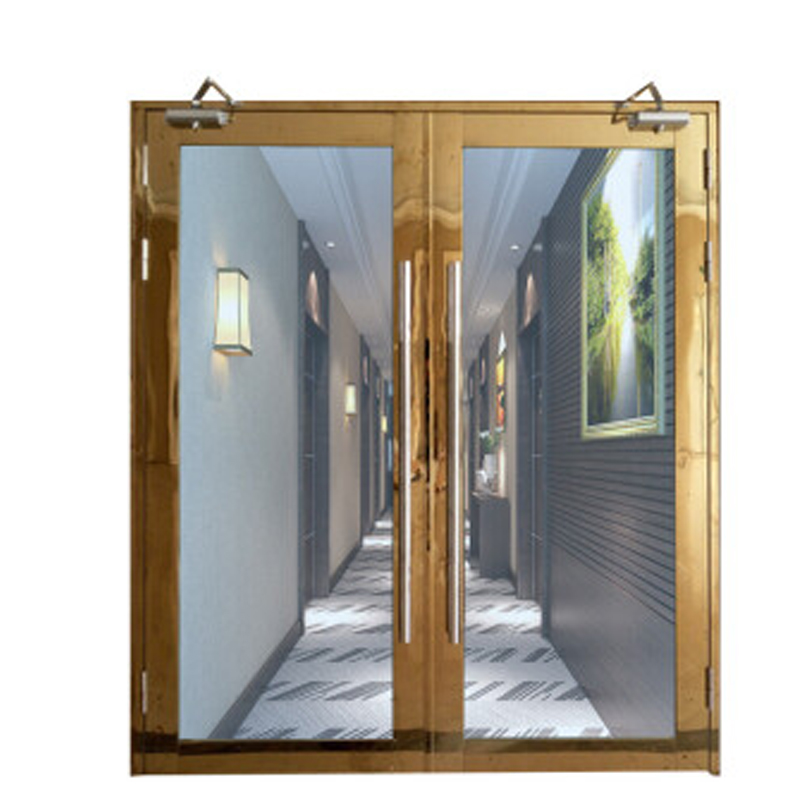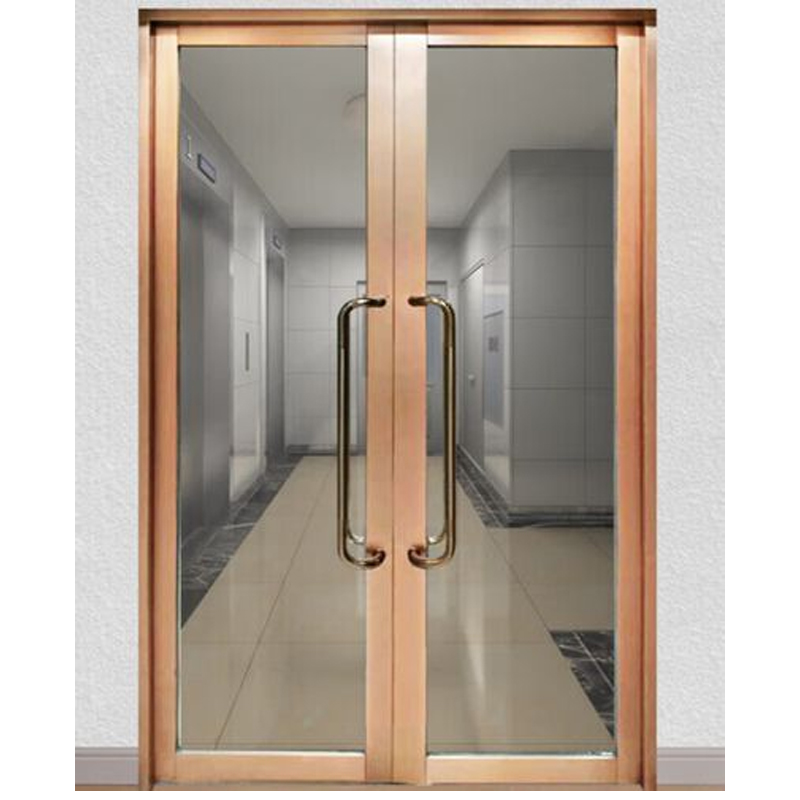With the acceleration of urbanization and the upgrading of building safety standards, professional fireproof glass doors have become the core components of modern building fire safety systems. This article systematically analyzes how fireproof glass doors can achieve a balance between fireproof performance and practical functions through material innovation and process breakthroughs from the dimensions of technical principles, product classification, application scenarios, industry standards and market trends, and explores its development prospects in the smart fire protection system.

Behind this technological iteration is a breakthrough in materials science. Taking composite fireproof glass as an example, its core fireproof glue layer uses special fire-resistant chemicals that can foam and expand when exposed to fire. When exposed to high temperature, the volume expands ten times to form a dense insulation layer. Single-piece fireproof glass forms a compressive stress layer on the glass surface through an ion exchange process to improve its resistance to thermal cracking.

Class A composite type: has both fire resistance integrity and thermal insulation, with a fire resistance limit of ≥1.5 hours, suitable for core fire protection areas such as firewalls and fire partitions
Class C single-piece type: focuses on fire resistance integrity, with a fire resistance limit of ≥0.5 hours, suitable for non-insulation demand scenarios such as fireproof windows and outdoor curtain walls
Infusion type: The fireproof glue is bonded to the glass through a vacuum infusion process to form an overall fireproof structure with a sound insulation performance of 42dB
Different products meet specific needs through differentiated designs. For example, for places that require high cleanliness, such as hospital operating rooms, fireproof glass doors with self-cleaning coatings on the surface have been developed; for scenes that require electromagnetic shielding, such as data centers, composite fireproof glass with integrated metal grids has been developed.
Horizontal fire partition: Fire partitions are formed through firewalls and fireproof doors. Typical cases include fireproof glass partitions in the atrium of airport terminals
Vertical fire partition: Fire doors are set in vertical passages such as stairwells and elevator vestibules. The ultra-white fireproof glass doors used in the Shanghai Tower achieve a fire resistance limit of 1.5 hours while ensuring light transmittance
Refuge floor design: As a temporary refuge space for personnel, fireproof glass doors must simultaneously meet the triple performance of fire resistance, heat insulation, and smoke prevention
It is particularly worth noting that in the field of new energy, the demand for fireproof isolation of energy storage power stations has driven the market for special fireproof glass to grow by 18% annually. The fireproof glass system used in a certain energy storage power station project of CATL successfully passed the UL94 V-0 combustion test, setting a new benchmark for the industry.
National standard: GB15763.1-2009 “Safety Glass for Buildings Part 1: Fireproof Glass” clearly stipulates the classification of fire resistance performance
Industry standard: GA93-2004 “Fireproof Door” puts forward specific requirements for the installation and maintenance of fireproof glass doors
Testing and certification: It is necessary to pass the test of the National Fixed Fire Extinguishing System and Fireproof Component Quality Supervision and Inspection Center to obtain a type inspection report
Typical performance parameters include:
Fireproof integrity: Class A ≥1.5 hours, Class C ≥0.5 hours
Thermal radiation intensity: ≤15kW/m² (Class B requirements)
Sound insulation performance: ≥35dB (composite type)
Impact resistance: passed the 6kg steel ball 1.2m free fall impact test

VI. Future Outlook: New Paradigm of Smart Fire Protection
With the development of intelligent buildings, fireproof glass doors will evolve into smart fire protection nodes:
Data interconnection: integrated IoT chips, real-time monitoring of temperature, smoke and other parameters
Emergency response: linked with the fire alarm system, automatically close the fireproof glass door and start the smoke exhaust system
Full life cycle management: product traceability through blockchain technology to ensure traceability of materials and processes
Technical breakthroughs include: development of high-temperature resistant polymer materials, with a target fire resistance limit of 4 hours; application of AI-driven defect detection system to increase the yield rate to 98%; hydrogen energy kiln technology to help reduce carbon emissions by 40% by 2030.
VII. Conclusion
The development history of professional fireproof glass doors is the co-evolution of material science, building technology and fire protection needs. From early reliance on imports to the formation of a complete industrial chain today, China’s fireproof glass industry has not only achieved technological independence, but also opened up new growth space in emerging fields such as new energy and smart buildings. In the future, with the advancement of green building and smart city construction, fire-resistant glass doors will break through the traditional fire protection function and evolve towards multi-functional integration and intelligent management, providing key support for building a safe and sustainable building environment.